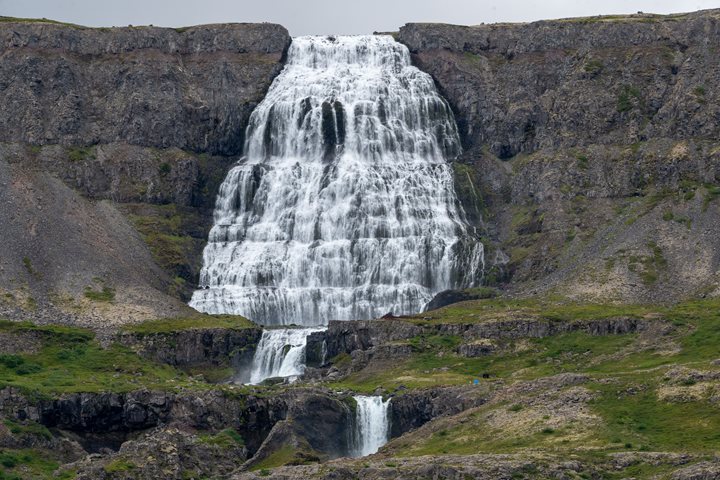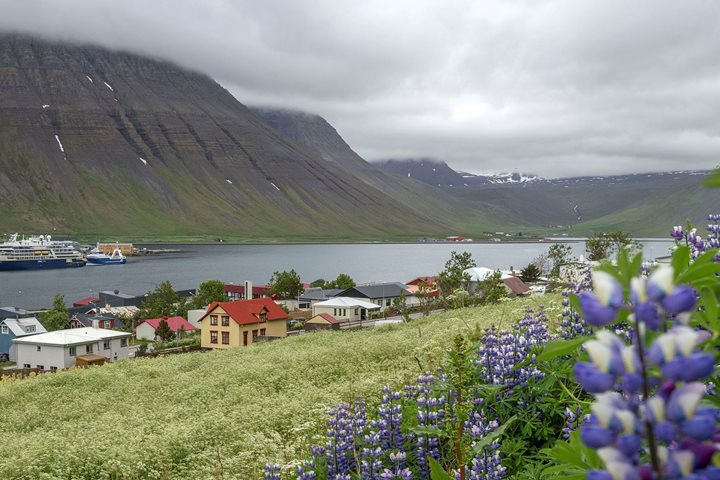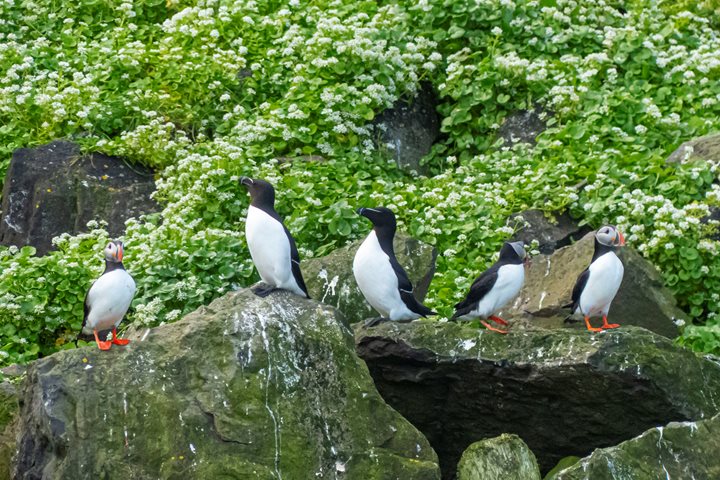This morning the mother ship dropped the hook off Hamburgbukta along the northwest coast of Spitsbergen Island. A very small bay, barely visible from the sea, was entered via a narrow entrance to a natural harbor surrounded by a dramatic glaciated landscape.
Setting off on our excursions of the morning we were impressed by the lush tundra and abundance of lichens as we made our way across the rolling rocky terrain of Albert I Land (named after Prince Albert of Monaco who contributed significant baseline information that is used today to compare climate and glaciers of a century ago). Not far from the landing we encountered the remnants of a hut once used by Norwegian trappers and the walrus bones nearby helped to paint the picture of an exploitive past. Further along the coast, grave sites of whalers were found and coffins buried in the active layer of frozen ground were surrounded by scurvy grass in bloom. Death by this vitamin C deficiency was the curse of early sailors and the irony of the plant that helped save the lives of many growing on the graves was truly cause for pause. In the distance Little Auks swarmed like bees off the cliffs and the long walkers made approach to the scree slopes of which they nest upon.
After lunch Captain Oliver steered us into the beautiful Blomstrandhamna area in Kongsfjorden where polar plungers braved the Arctic waters. Being surrounded by glaciers from Isachsenfonna (the Isachensen ice field) enhanced the experience and cooled the waters for the brave, bold and slightly cold!
After dinner we made a special visit to Ny Alesund, one of the world’s northernmost year-round communities. Once a coal-mining town now dedicated to scientific research, this little slice of humanity in an archipelago largely devoid of inhabitants is one of the most significant historical sites in Svalbard. This site has been the starting point of several historical attempts to reach the North Pole by names like Amundsen, Ellsworth and Nobile. In the middle of town we found a statue of Roald Amundsen and further up the road could see the mast to which he attached his airship “Norge” in 1926 before launching on his transpolar flight over the North Pole and the Arctic Ocean. This attempt was preceded by an unsuccessful attempt by Amundsen to fly to the pole the year before in two German Dornier Wal flying boats. In 1928 the airship “Italia” launched from this site with Nobile as pilot but the flight crashed, prompting the first international air-sea rescue, during which Amundsen’s rescue plane went down and he was killed.
Walking around the area we had close encounters with reindeer, arctic terns, and sled dogs and saw some amazing aerial predation by skua and glaucous gulls.
Leaving the dock of Ny Alesund we bid farewell to the Svalbard Archipelago and started making our crossing across the North Atlantic to Greenland.






